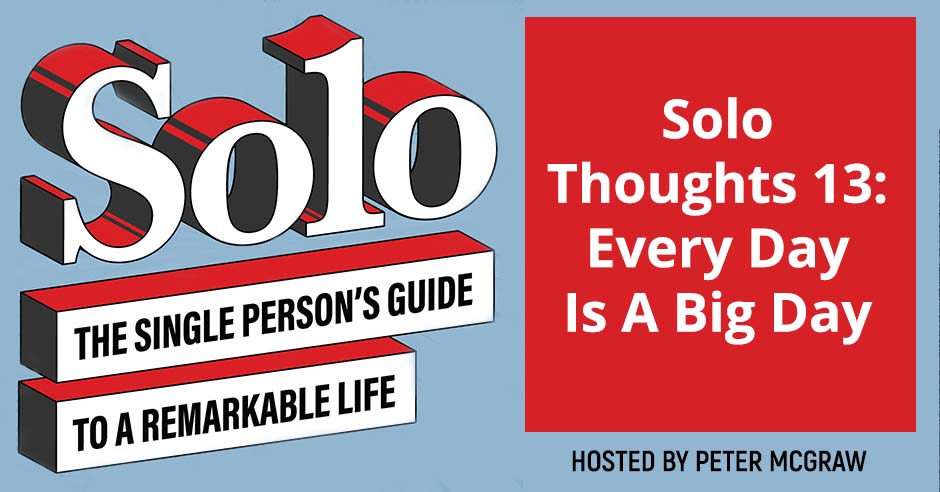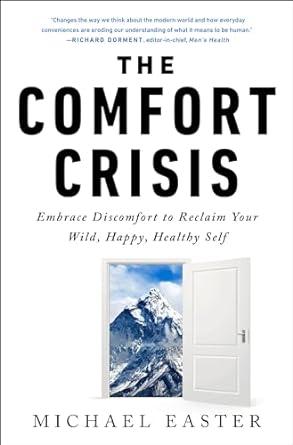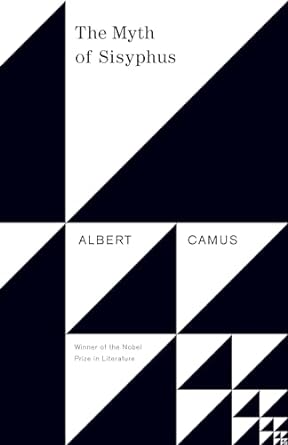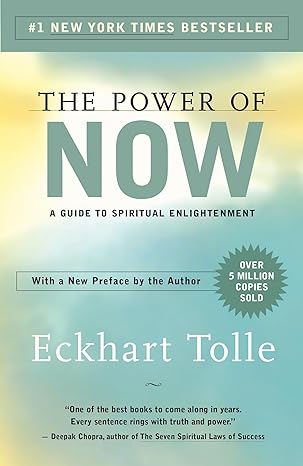
While many listeners of the Solo podcasts are “No Way” Solos who are not interested in dating (for now or forever), the “Just May” and “New Way” Solos are often navigating the dating apps in search of love or lust. Peter McGraw and Jessalyn Dean talk about best practices for online dating–from figuring out your goals to how to pick the best pictures. They finish the episode by doing a dating profile audit for two online daters.
—
Listen to Episode #205 here
Solo Thoughts 13: Every Day Is A Big Day
A Solo Thoughts episode is more work and not necessarily better than a typical episode but I’m compelled to do them on occasion. I spoke briefly about this idea in Episode 200. However, its origins go back more than ten years. Before I get to it, I want to welcome new audiences as a result of the Solo book launch. I’m thrilled to have you join the solo movement. Please consider joining the Solo community at PeterMcGraw.org/solo. We have a new online space that is great, and you can find bonus material from previous episodes there. Whether you’re a new audience or an old one, would you help get the word out about the movement? If you buy the book, would you please review it as soon as you can on Good Reads and/or Amazon? Put in a purchase request for the book at your local library.
Perhaps rate and review the podcast wherever you listen. This happens to matter a lot, and the show might get a little bit of hate. You can balance out some of those negative reviews. Feel free to follow the Solo Instagram account, @Unapologetically_Unattached, and that account crossed over 1,000 followers. Tell someone, especially a podcast host or a journalist, about the Solo movement. Reach out to me if you need some help with that. I’m also looking to give talks. You can find them on my website. Think about inviting me to give a talk and then join the solo community at PeterMcGraw.org/solo. Thanks so much. Let’s get started.
‐‐‐
When I wake up, I often say, “It’s a big day.” If asked why, my response is, “Every day is a big day.” Why is that? Life can be short. Both of my parents died relatively young, 54 and 69, and here I am at age 53. I have too many things that I want to do with my life. I don’t have time for non-big days. While life is often quite good, it can change quickly. You don’t know what’s around the corner. Though the origins of Big Day, or as I call it the Big Day Theory, go back years, I revisited this idea in a different way.
My psychedelic trips are well-known by now. I’ve been doing them as self-therapy and for a bit of fun. An extension of this notion that every day is a big day came to me during a trip to the Hi-Fi homestead in Joshua Tree. The homestead is the ideal place for my psychedelic trips, whether they’re therapeutic or not. It is the perfect mix of isolation so I can misbehave as needed, comfortable, and stimulating on the inside. After all, there’s a record player and a rack of vinyl, which puts the hi-fi in the Hi-Fi homestead. It’s beautiful on the outside with scenic views, a plethora of Joshua trees, and the occasional roadrunner, which is always a treat to see.
During that day at the homestead, it was a big day. I moved from location to location around the homestead, reflecting on my life and being open to the insights that came to me. For example, I soaked in the hot tub and was struck by what a luxurious invention a hot tub is, purely hedonistic, and I thought about how much luxury we have in modernity. Kings of yonder day would switch places with me in a second to be able to enjoy that hot tub in the desert sun and have an outdoor shower steps away, a working toilet a few more steps away, and that rack of vinyl a few more steps inside.
It was a good reminder that the good old days were not that good even if you had it better than most. I also watched the sunset with a cacti friend or as I call him, “My prickly little friend.” I made friends with a plant, and while we sat and watched the sunset together, I reflected on how marvelous the world can be. Later on, winding down, I lay in the hammock, looking at the stars. I saw a shooting star and thought to myself, “That’s it. That’s my signal to go to bed.”
While I was lying in bed at the end of this big day reflecting, I exclaimed, “I was alive today. I wasn’t just living. I was alive.” I saw beautiful sights and experienced hedonic pleasure, the hot tub that is. I listened to fun and meaningful music. I also experienced deep emotions, positive and negative. I laughed. I wept. I was all struck. I was alive. I don’t feel that way every day. A lot of my days, like yours, are run-of-the-mill. I have my routines, creative work at cafes, and gym time but nothing that special happens.
Part of the reason I like doing the show so much is I feel alive when I tape an episode. I need to be prepared, quick-witted, empathic, attentive, insightful, and articulate. Those episodes are often emotional, joyous or sad, sometimes both. I liken the difference between merely existing to feeling alive to the difference between walking and sprinting. Walking is good and easy but sprinting requires focus and intensity. I feel alive when I sprint.
I’m fortunate I like my life but too much repetition becomes monotonous. I call it Groundhog Day after the Bill Murray movie where he gets stuck living in the same day over and over in Groundhog Day in Punxsutawney, Pennsylvania. As you might imagine, that is not an exciting day in not an exciting town. When I start to experience Groundhog Day, I’m often compelled to travel somewhere and have a change of scenery even if I live my life in the same way in that other place as I’m doing in Bogotá, Colombia.
I don’t need to leave home to feel alive. What do I mean by merely living or existing versus this notion of being alive? Merely living in this context implies a passive autopilot existence where I navigate daily life, devoid of purpose, engagement, or emotions. It involves being ensnared in habitual routines perhaps dictated by comfort. This mode of existence may be marked by a disconnect from the present moment. Maybe there’s a bit of apathy, boredom, and a lack of physical, intellectual, or emotional challenge.
In his book, The Comfort Crisis: Embrace Discomfort to Reclaim Your Wild, Happy, Healthy Self, Michael Easter explores the idea that modern society’s pursuit of comfort (remember that hot tub) has led to negative consequences for well-being. The central thesis of this book is that embracing discomfort is essential for a more fulfilling, healthy, and resilient life. I would like to remind myself of this when I feel the pain of doing a cold plunge.

The other side is being alive. This notion emphasized living a life infused with heightened vitality and awareness where ordinary moments are imbued with meaning, beauty, curiosity, and challenge. It encourages pushing past the comfort zone into the realm of novelty and discovery, mindfully embracing life’s experiences, whether purposeful, engaging, or actively pleasing.
This distinction is reminiscent of the foundation and the flourish model of well-being, one that I talk about in my book and I’ve addressed here in this show. Taking care of your foundation, especially your health, is about living. Being alive, however, is related to flourishing, whether through purpose, pursuing achievement or meaning, whether to engagement, engaging in creative tasks that are challenging, or simply enjoying the vibrancy and deep pleasures of life, perhaps the sublime.
The idea of being alive versus plain living is something that I’ve been thinking about as I prepare for a podcast series on aging, retiring, and dying solo. The work on longevity focuses on living a long life. Survival is the goal. All things equal, I want to live a longer life than a shorter one. Indeed, simply living is a gift but in the same way that I don’t want to judge the goodness of a relationship by its duration, nor do I want to judge a life, at least my own, by its duration. I want to spend more days alive than just living.
There’s a complimentary notion in the longevity literature, healthspan, that is maintaining a high quality of life for however long you live. The idea is to have a long life and a high quality of life physically, psychologically, intellectually, and emotionally. Charlie Munger, the right-hand man to Warren Buffett passed at age 99, and he was doing his thing until the end. He had a long lifespan and an equally long health span. That’s my goal, go full speed until I hit that wall.
However, I want to argue that it’s more than just about maintaining high-quality health, cognitive, physical, and emotional. It’s about actively seeking ways to be more alive. As I contemplate aging, particularly my plans for semi-retirement, my primary goal is to remain vibrantly alive. This means continuously challenging myself, embracing new experiences, and fostering personal growth. I believe that this approach will not only enrich my life but potentially extend it. After all, it’s easier to rise in the morning with the anticipation of a big day ahead.
Several years ago, I got a glimpse into a possible retirement path, and I didn’t like it. I was working on my first book, and I was pushing hard on my job. I was writing papers, I was traveling a bunch, and I was in an escalator-style relationship. I had so much happening that my anxiety was way up. I had trouble sleeping and was waking up super early. I would get out of bed and make a short walk to this old-school coffee shop in Boulder. It opened at 5: 30 in the morning.
I would often go there. It would still be dark out. There were regulars at this coffee shop, especially these early morning hours. These guys were in their 60s, 70s, and 80s, and I was struck by this. They did the same thing day in and day out. They would read the newspaper, talk about the Denver Broncos, the local professional football team, and chat about politics.
I remember thinking as stressed out as I was sprinting full speed with my professor job that I didn’t envy them. They seemed healthy and wealthy, and these guys were on track for longevity and even along healthspan. They took care of themselves. They had social connections. I felt like there was more opportunity with all that time, health, and wealth. To each their own but I didn’t share that perspective of retirement. It felt like Groundhog Day.
There’s lifespan, healthspan, and alivespan or vitality span? I’m still working on the language. Perhaps you can help. I’m not the first to talk about this dichotomy. People a lot smarter than me have grappled with what it means to live rather than merely exist. The great Albert Camus in The Myth of Sisyphus presented a new take on the human condition, how to turn routine tasks into moments of engagement. I talk about some ways to do this in Solo Thoughts Episode 10, Dancing with Bulls. There are ways to turn the mundane into the magical or the stressful into the spectacular by leaning into a situation and demonstrating your proficiency with panache, your skill with style, and your expertise with elegance. It may be worth another listen.

The American existential psychologist Rollo May believed that not living life to its fullest is often due to people avoiding three key things. They avoid thinking about their death, they avoid embracing their freedom to make choices, and they avoid being creative purportedly because all of these things are challenging. May argued that many people live in what’s like being half-asleep and not engaging deeply with life. He highlighted how people can wake up from a living death by bravely facing life’s big questions and challenges.
Erich Fromm, the German psychologist and philosopher, took this notion further, contrasting two modes of existence. One is having, which is focused on material possessions and status versus being, which is about authentic living and self-expression. Fromm’s insights speak to our modern crisis of chasing material possessions rather than purpose. Finally, Eckhart Tolle emphasizes in his teachings the importance of living in the present moment, a concept central to his book, The Power of Now.

He suggests that by focusing on the present rather than dwelling on the past or worrying about the future, we can discover a sense of peace, even enlightenment. Tolle believes that this awareness of the now allows us to cut through the distractions and complexities of modern life, which are often driven by ego and constant thinking. I suffer from this problem, as you know. In this state of present-moment awareness, we can find a deeper connection with life itself, and maybe even have a mystical experience of sorts.
Being alive is like sprinting. It’s not comfortable. It has its challenges but it’s about growth, and growing has pains. Being alive has its risks. You’re more likely to make mistakes, at least acts of commission. This call to live with vitality and to remain consciously alive crashes with our craving for comfort and requires facing failure. It has social risks too. I don’t think that the world wants too many people to feel alive. That’s inconvenient. It’s messy. While it can inspire some people, it makes others uncomfortable.
How to be alive more often? You probably already know what works for you but here are some ideas and some ways that members of the Solo community feel alive. A good place to start is to cultivate gratitude and self-awareness. Maintaining a gratitude journal and practicing regular self-reflection helps sharpen awareness of life’s gifts and opportunities. One way to do a gratitude journal is to write what went well and why, and it’s the why part that matters. It helps you hone in and look for other chances to be grateful.
One member of the Solo community wrote, “I feel alive when I celebrate a birthday with someone I love dearly and ensure I am present, undistracted, and focusing on celebrating their presence in my life.” Another tactic is to seek flow states through challenge and creativity, engagement as I call it. Pursue creative activities like art, music, or writing, which fully engage your skills and challenge in the moment like when I do an episode of Solo. These novel challenges breed this aliveness.
A member of the Solo community wrote, “I feel alive when I force myself into uncomfortable and challenging situations. I have learned to respect the suck. It does suck while I’m in it but there’s something so satisfying and at times invigorating afterward.” Another tactic is to infuse each day with novelty and variety. This is a way to battle the Groundhog Day phenomenon. Seek out new experiences, varied activities, and unexpected delights that interrupt habitual patterns. Meet interesting people. Visit new horizons. Sample different cuisines. Novelty promotes wakefulness over monotony. Maybe try flirting with someone.
Here are some comments from members of the Solo community, “I feel alive when I sneak in an impromptu break in between clients and lay in the sun in my backyard. I feel alive when I go for lunch or coffee with a friend who lights up my soul. I feel most alive when I’m dancing preferably to live music at a concert that I’ve attended solo.” The next tactic, reconnect with nature. Spend time immersed in natural environments removed from human-built artifice. A Solo community member wrote, “I feel alive gardening or doing activities outside. Working with nature is a deeply moving experience. I feel alive walking in bare feet on sand, rocks, and grass.”
Next one, maintain an adventurous spirit through excitement and risk. Push your boundaries by trying thrilling activities or perhaps exotic travel. Say yes to opportunities to provide excitement while expanding your comfort zone. Solo community members say, “I feel alive when I’m outdoors skiing, hiking, paddling, or wandering. Anytime I can tap into that deep connection with my environment is a blessing.” Several people in the community mentioned skydiving, and one even mentioned shark fishing.
Two more to go. Next one, nurture close bonds. Prioritize meaningful time, deepening connections with intimate friends and family. Make a call instead of sending a text. Meet in person rather than making a call. Community members wrote, “I feel alive when I have a kitchen full of friends while I cook, drink, and enjoy each other’s company. I feel alive when I make love with myself or others. I feel alive laughing in a room full of strangers. It feels healing.”
Finally, perform acts of generosity that uplift others. As I’ve talked about, one thing about singles is they often give more to their communities. They donate their time and money. They have more bandwidth in some situations. Look for opportunities, large and small, to help others struggling or in need, asking nothing in return. Find fulfillment in compassionate service, volunteer work, and uplifting those around you.
Community members wrote, “I feel alive and challenged when I’m exercising or in a situation with a client, which I must be brave and ask tough questions. I also feel alive when I’ve made someone else’s life better. Some examples are donating blood, giving someone a ride to church, or learning that a client got results from a product that I sell.”
In conclusion, this episode has to do with the passive state of merely living versus an active pursuit of a remarkable life. Whatever that may be for you. Remember, there is no one remarkable life. There are remarkable lives, or rather, there are many ways to be remarkably alive. You may not like the language of merely living versus being alive. I understand I’m not fully committed to it but you have something better. Let me know via the Solo community at PeterMcGraw.org/solo and tell me what makes you feel alive. Thanks and cheers.
Important Links
- Episode 200 – Previous episode
- Solo
- PeterMcGraw.org/solo
- @Unapologetically_Unattached – Instagram
- The Comfort Crisis: Embrace Discomfort to Reclaim Your Wild, Happy, Healthy Self
- The Myth of Sisyphus
- Dancing with Bulls – Previous episode
- The Power of Now